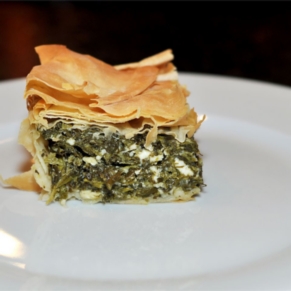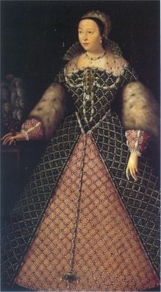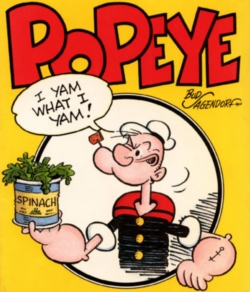Deuteronomy 309/84: National Spinach Day .. but why Fiorentina?
Why are dishes with spinach called Florentine / Fiorentina? Florentine refers to Florence in Italy and the term would translate into something like “in the manner of Florence.” It's origin comes from the French Queen from 1547 named Catherine de Médicis who was born in Florence and wife of Henri. Quite ruthless and justifiably paranoid she imported her own cooks from Florence and brought along spinach seeds to grow. She had her cooks make all her dishes with spinach and this practice became popular enough that it came to be known as Spinach à la Florentine. Catherine is also claimed to have introduced many aspects of table etiquette to France including the fork!
Spinach [Spinacea oleracea] gets its name from the old Persian word aspanakh. Spinach is believed to have originated there and still grows wild in Iran and has been cultivated for over 2000 years. It was introduced into China as early as 647BC but it did not reach Europe until the ninth century when the Saracens invaded Sicily. Arabs alse brought it to Spain in the eleventh century, and it reached England by the mid-1500’s calling it variously spinech, spinage, spinnedge or even spynoches. Sometimes though, this wholesome vegetable needs to take the limelight rather than being a supporting act. This calls for spanakopita, a Greek dish where the spinach is sandwiched in pastry with feta cheese.
 
There are three main types of Spinach: Savoy spinach with curly leaves, flat/ smooth leafed spinach and Semi Savoy spinach with crinkled leaves. China is the biggest producer in the world and the USA second. It's a cool weather crop so it produces best in spring and early summer.
Spinach reduces dramatically in size when it is cooked.
Perpetual spinach is actually a chard - from the beet family but is very similar to true spinach in flavour. It is much easier to grow and far more vigorous than true spinach with the advantage of constantly producing a new crop when picked and so is ideally suited to home gardening in a small space.
 
Cartoon character Popeye, with his odd accent and improbable forearms, used spinach to great effect. It gave him his strength and perhaps his distinctive speaking style. But why did Popeye eat so much spinach and what was the reason for his obsession with such a strange food? The truth begins more than fifty years ago in 1870 when Erich von Wolf, a German chemist, examined the amount of iron within spinach compared with many other green vegetables. When recording his findings von Wolf accidentally misplaced a decimal point changing the iron content in spinach. Whilst there 3.5 milligrams of iron in a 100-gram serving the accepted fact became 35 milligrams. Once this incorrect number was printed spinach’s nutritional value became legendary. So when Popeye was created studio executives recommended he eat spinach for his strength, due to its vaunted health properties. Apparently Popeye helped to increase American consumption of spinach by a third! The error was eventually corrected 67 years later in 1937! The error was so widespread that the British Medical Journal published an article discussing this spinach incident in 1981 over a century later trying its best to finally debunk the issue. Popeye of course lives in his jingle but why he was a sailor has never been revealed.
I’m Popeye the sailor man. I’m Popeye the sailor man.
I’m strong to the finich, cause I eats me spinach.
I’m Popeye the sailor man.
Spinach is one of our favourites! Until today's blog research however I had no idea of the Florentine connections or the origins of Popeye's obsession. I'd so often seen Fiorentina in Italian restaurants I assumed it must have been their ingredient. Both as ever great stories to share. Spinach will be served this evening just as a side vegetable with Fish & Chips which I'm heading to Far Cotton to collect at 6.15pm. Don't think that will qualifies as fiorentine however. And earlier without my help the gazebo had its trial run …..
Published Date: March 26th 2021
|





